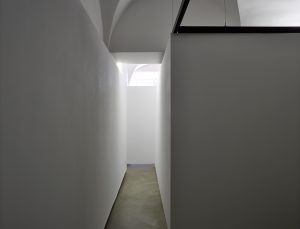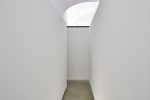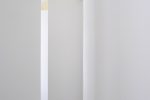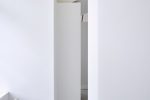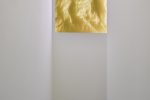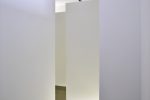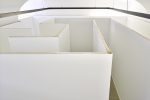Anal Birth
Catrin Bolt
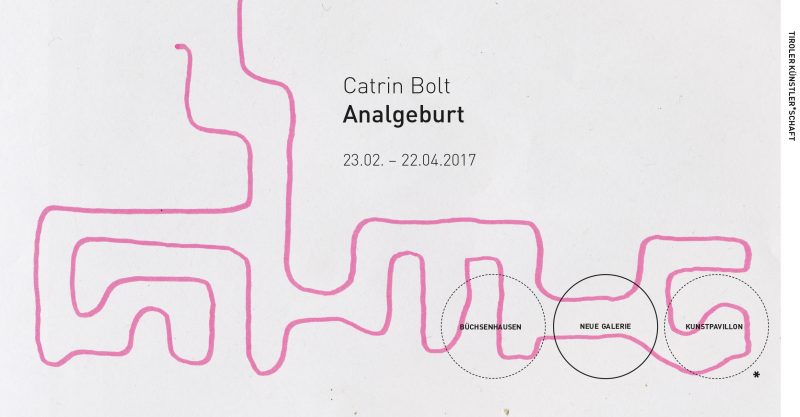
Just like an idea or a text, a path also leads towards a target, the reason for thinking, reading or walking in the first place. Arrival, then, justifies the effort involved in getting there. But all three – ideas, texts or paths – can also be aimless, can simply be themselves. Such self-purpose means a shift in values and fewer questions are asked — no more questions about the meaning of eating, sleeping and working, or even life itself.
A panorama always refers back to those who observe it. They are standing at the focal point, defining the motion and the perspective. The all-round perspective defines the centre, a comprehensive opposite helps to create one’s own identity. Here, one has absolute control and overview; the curve and the turn are the aim, so defining one’s own position.
When travelling to Tyrol to stay there overnight, one envisages oneself a view from the window, a wide panorama. But things’ counterparts are always a part of them as well, and so the mountainous ridge in front of the window stems from the same place that allows us the view.
And so all aspects of the panorama and the all-round view can be rediscovered in their apparent opposite. The all-encompassing perspective as we look down from a mountain also contains the restricted view in the valley or the sense of getting totally lost in the mountain’s interior. Loss of orientation and control, being compelled to take a specific path rather than determining the direction oneself, blocked views rather than an overview – these are all aspects of a labyrinth. By contrast to the airy view across country, the earliest representations of labyrinths are always linked with a path into the mountain or the earth. But as with the all-round view, everything revolves around the individual himself, or rather, he revolves around himself. At the end, or in the middle, he has not arrived but is standing back at the beginning again, or he has progressed only a couple of metres and needs to go back the same way in a complete reversal.
The dance, as an expression of the self aimed outwards, is analogous to and a reversal of the 360°-panorama. We need to complete it in order to see the Anal Birth (meandering, as a panoramic sculpture). In disorientation, a definition of position comes about nonetheless.
The dance and the 360°-panorama make us think of a further aspect of our self-definition: panorama images are regarded as precursors to the moving image, in film and fiction. Perhaps we do not think about this often enough, but it is actually reassuring to know that every Sunday we can dance through the country comfortably from our armchairs, along with the camera that turns on its own axis. The Wetterpanorama (weather panorama), as a national surveillance programme, allows us to trace out the beauties of the country. Led by the prescribed camera movement, we can take a look, make a check, and once again we ourselves are at the centre — the hub and the focal point.
Perception only develops with movement and change. In the interim space, that is, the difference between the individual snapshots: that is when things become tangible.
The labyrinth is already unfixed in both definition and materiality. It contains differences within itself, which constitute its perception: starting out from a dance, from the bird’s eye perspective, it is the former’s pattern of movement and a figure of orientation to simplify the choreography. It is true that at some point in time the course of the dance is no longer understood by either the viewers or the dancers, but as a symbol and a graphic figure it continues to bear meaning. At the same time as the movement, the term also refers to the (functional) architecture that directs this movement. The Anal Birth is also material in different ways: it has walls but it loses its interior or exterior, it is the movement and simultaneously a sculpture whose form one can see only when walking, and it is also exhibition architecture.
Somewhere in between, then, a video is beamed into this function, a video in which the perspective is obviously one flying over landscapes. The camera, moving in its turn, explores different, difficult to identify areas. However, these are actually plastic refuge found in the natural environment, which has been filmed close-up in the studio using a hand-held camera. Aspects of the panorama and the labyrinth can be found again here – landscape, overview and control as identity-creating elements, which are lost in the detail and the lack of orientation, apparent understanding through the appraisal of regions and areas. By showing the destruction and pollution of our surroundings and environment the video more clearly poses the question of landscape and definition of position as a part of identity and self-definition.
Thus a further aspect of the labyrinth is addressed: with the reversal at the centre it was originally a symbol of initiation and death, the precondition to which is self-definition. Paradoxically, the decay of something is the ultimately valid proof that it actually existed.
Catrin Bolt
Catrin Bolt, *1979; 1997 – 2003 Study at the Academy of Fine Arts, Vienna; solo exhibitions and permanent presentations in public space (selection):
2016 memorials for Marie Jahoda and Elise Richter, courtyard of the University of Vienna; Pameran satu hari, Sewon Art Space, Yogyakarta (ID); 2015 Kapital und Interessen, meine Schulden groß und klein werden einst verrechnet sein (Capital and Interests, my debts both large and small will all be paid one day), prize exhibition Otto Mauer Prize, Jesuitenfoyer, Vienna; Herzliche Fernschachgrüsse (Warmest remote chess greetings), case #1, curated by Markus Waitschacher, mobile exhibition; haaaauch-quer, Klagenfurt; 2014 Alltagsskulpturen Mahnmal (Everyday sculptures memorial), art in public space, Vienna; galerie nectar, Tbilisi (GE); 2013 Lauftext (Running text), art in public space, Steiermark, Graz; 2010 Orientierungstafeln (Orientation boards), Viehofen, St. Pölten; Thema verfehlt (Missed the point), Kunstraum Lakeside, Lakeside Park, Klagenfurt; 2009 Parcours, permanent installation, Schloßpark Grafenegg, Grafenwörth; 2008 Bilder einer Ausstellung (Pictures of an Exhibition), Kabinett im Salzburger Kunstverein, Salzburg; 2007 Mechurchletukhutsesi, Galerie Winter, Vienna; 2006 die verlorene gute Laune (lost good mood), Austrian Cultural Forum, Warsaw (PL); mtkvari njet, National Art Center, Tbilissi (GE); 2005 there is still something you should know, Galerie Winter, Vienna; 2004 built-in ceiling, Galerie der Stadt Gmünd; aus´gstellt is (it’s exhib‘ted), galerie.kärnten, Klagenfurt; no show is an island, Rossek/Stahl, Frankfurt (DE); 2003 Vor deiner gebrochenen Nase (In front of your broken nose), Galerie 5020, Salzburg; Invitationplonk, curated by B+B, Austrian Cultural Forum, London (UK); Hotel Imperial, Hotel Rhizom, Graz
